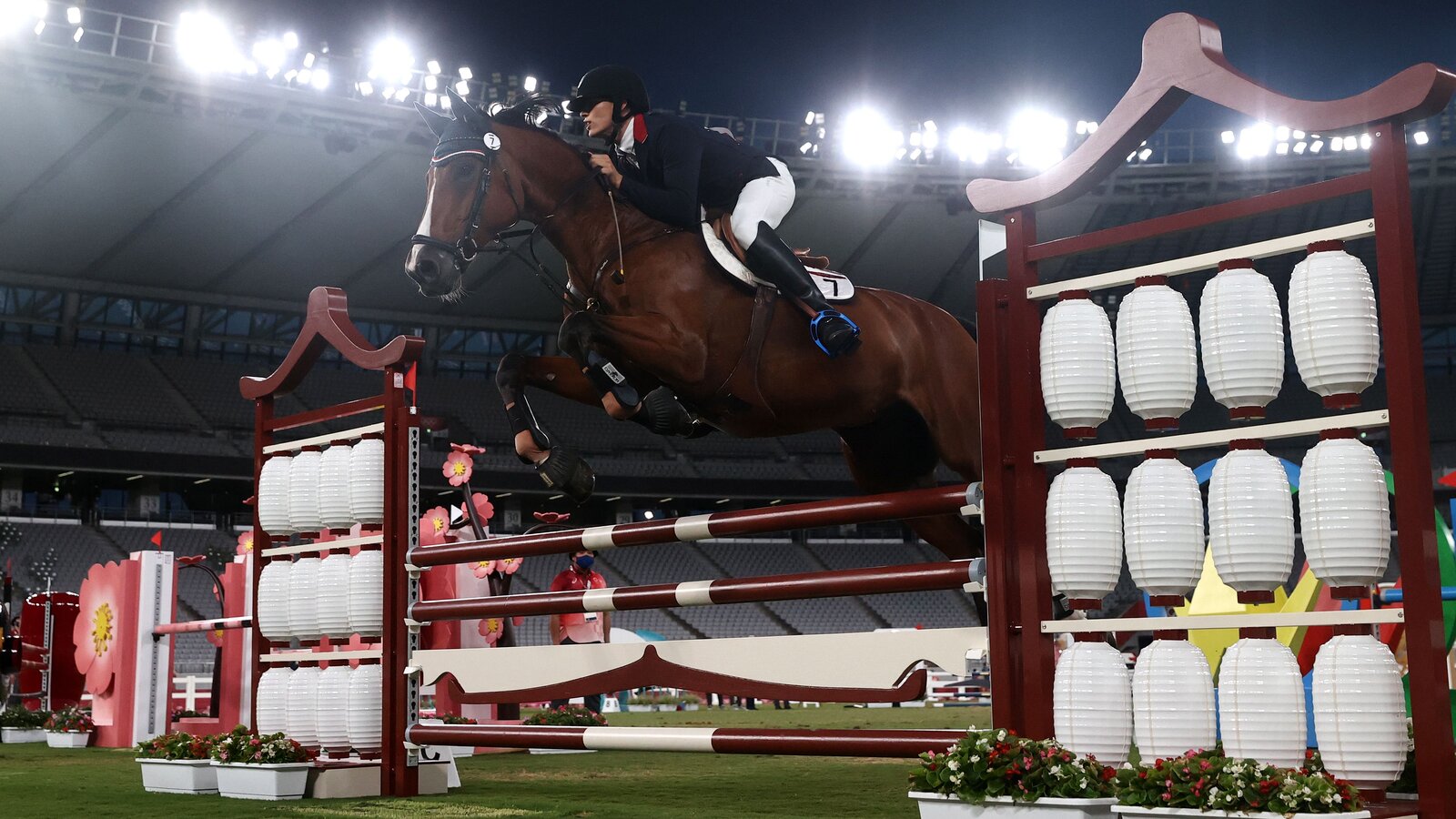
Equestrian jumping, also known as show jumping, is an exhilarating and fast-paced sport that combines horsemanship and athletic ability. The riders and horses must navigate a series of obstacles, including fences and jumps, with the goal of completing the course in the shortest time possible without knocking down any of the jumps. It is a testament to the incredible teamwork and coordination between rider and horse.
In this article, we will delve into 17 fascinating facts about equestrian jumping that will not only pique your interest but also give you a deeper understanding of this thrilling sport. Whether you are an avid equestrian fan or just curious about this discipline, these facts will provide you with a newfound appreciation for the skill and dedication required to excel in equestrian jumping.
Key Takeaways:
- Equestrian jumping is a thrilling sport that requires teamwork between horse and rider, with obstacles evolving over time to challenge their skill and technique.
- Show jumping is a popular equestrian discipline, featuring a variety of competitions and requiring clear communication, trust, and partnership between horse and rider.
The Origins of Equestrian Jumping
Equestrian jumping has its roots in fox hunting, where riders had to navigate various obstacles in the hunt. As the sport evolved, it transformed into a standalone discipline focused on jumping over fences and other obstacles in the most efficient way possible.
The Evolution of Obstacles
Over the years, equestrian jumping obstacles have become more complex and challenging. Today, riders must navigate over a variety of fences, including verticals, spreads, oxers, combinations, and water jumps.
The Importance of Technique
Successful equestrian jumpers require a combination of skill, technique, and intuition. Riders must have proper balance, control, and the ability to adjust their position in order to help their horse effectively clear each fence.
The Role of the Horse
Horse selection is crucial in equestrian jumping. Horses must possess natural jumping ability, athleticism, and agility, as well as a willing and cooperative temperament. Breeds commonly seen in show jumping include Warmbloods, Thoroughbreds, and Irish Sport Horses.
Communication is Key
Clear and effective communication between horse and rider is essential in equestrian jumping. Riders use their reins, legs, and body position to communicate their intentions to the horse, guiding them through the course with precision.
The Challenge of Speed
In competitive show jumping, riders not only need to clear the obstacles but also do it within a specified time limit. This adds an additional layer of challenge as riders strive to achieve a balance between speed and accuracy.
The Height of the Fences
Equestrian jumping fences can vary in height, with courses ranging from small jumps for beginners to towering obstacles exceeding 5 feet for advanced competitors. The height of the fences often depends on the skill level and experience of the riders.
The Thrill of the Jump-Off
In many show jumping competitions, a jump-off round is held for riders who have cleared the initial course with no penalties. The jump-off is a thrilling and fast-paced round where competitors aim to clear a shortened course in the fastest time possible.
Olympic Recognition
Equestrian jumping has been a part of the Olympic Games since 1900, showcasing the incredible skill and teamwork of riders and horses on a global stage.
A Test of Trust and Partnership
Equestrian jumping requires a strong bond and trust between the horse and rider. The partnership between them is built through hours of training, understanding, and shared experiences.
The Importance of Course Design
Course designers in equestrian jumping play a crucial role in creating challenging and fair courses. They strategically place obstacles, test different techniques, and consider the flow and rhythm of the course.
The Scoring System
Equestrian jumping is scored based on penalties incurred during the round. Penalties can include knocking down fences, refusing jumps, or exceeding the time limit. The rider with the fewest penalties wins.
The Variety of Competitions
Equestrian jumping offers a variety of competitions for riders of all levels. From local shows to prestigious international events such as the Rolex Grand Slam, there are opportunities for riders to showcase their talent and progress in the sport.
The Popularity of Equestrian Jumping
Equestrian jumping is one of the most popular disciplines within the equestrian world. Its thrilling nature, impressive displays of horsemanship, and the partnership between horse and rider have captivated audiences worldwide.
The Impact of Technology
Technology has played a significant role in equestrian jumping, both in training and competition. High-speed cameras, video analysis software, and training apps have revolutionized the way riders and trainers analyze and improve their techniques.
The Role of the Ground Jury
In equestrian jumping competitions, a ground jury is responsible for ensuring the fairness and integrity of the competition. They observe the riders’ performances, enforce the rules, and make crucial decisions regarding penalties or disqualifications.
A Lifetime of Learning
Equestrian jumping is a never-ending journey of learning and growth. Riders continuously strive to improve their skills, deepen their understanding of the sport, and build lasting relationships with their equine partners.
Equestrian jumping is a captivating sport that combines grace, athleticism, and sheer determination. Whether you are an aspiring equestrian or an avid spectator, understanding these 17 facts about equestrian jumping will enrich your appreciation for this awe-inspiring discipline.
Conclusion
In conclusion, equestrian jumping is an exhilarating and challenging sport that requires not only skill and precision, but also a deep connection between horse and rider. These 17 facts about equestrian jumping highlight the impressive athleticism of both the horse and rider, as well as the rich history and excitement surrounding this thrilling sport. From the tallest fences to the fastest speeds, equestrian jumping continues to captivate audiences around the world. Whether you are a seasoned equestrian or a casual observer, this sport is sure to leave you in awe of the incredible feats accomplished by these remarkable athletes.So, buckle up and prepare to be amazed as you witness the dynamic and electrifying world of equestrian jumping!
FAQs
Q: What is equestrian jumping?
Equestrian jumping, also known as show jumping, is a competitive sport where horse and rider navigate a series of obstacles, including fences and walls, within a set time frame. The goal is to clear all obstacles without knocking them down or incurring penalties.Q: How high can the jumps be in equestrian jumping?
In international competitions, the fences can reach heights of up to 1.60 meters (5.2 feet). The difficulty level of the jumps varies depending on the level of competition.Q: How fast do horses go during equestrian jumping?
Horses can reach speeds of up to 30 miles per hour while navigating the course. The combination of speed and agility is crucial for successfully clearing the jumps.Q: What breeds of horses are commonly used in equestrian jumping?
Several breeds excel in equestrian jumping, including Warmbloods, Thoroughbreds, and Irish Sport Horses. These breeds are chosen for their athleticism, agility, and willingness to jump.Q: Is equestrian jumping dangerous for the horses?
While equestrian jumping is a challenging sport, horses are trained extensively to become skilled jumpers. With proper training, conditioning, and veterinary care, the risks can be minimized, and the sport can be enjoyed safely by both horse and rider.
Equestrian jumping's an exhilarating sport, but there's more to explore in the world of horses and winter activities. If you're curious about gliding through snowy landscapes, check out our fascinating facts about cross-country skiing. For those who prefer staying in the saddle, our article on horse riding is sure to pique your interest. And if you can't get enough of the equestrian life, dive into our comprehensive look at equestrianism and all its facets. From the stables to the slopes, there's always more to discover!
Was this page helpful?
Our commitment to delivering trustworthy and engaging content is at the heart of what we do. Each fact on our site is contributed by real users like you, bringing a wealth of diverse insights and information. To ensure the highest standards of accuracy and reliability, our dedicated editors meticulously review each submission. This process guarantees that the facts we share are not only fascinating but also credible. Trust in our commitment to quality and authenticity as you explore and learn with us.


